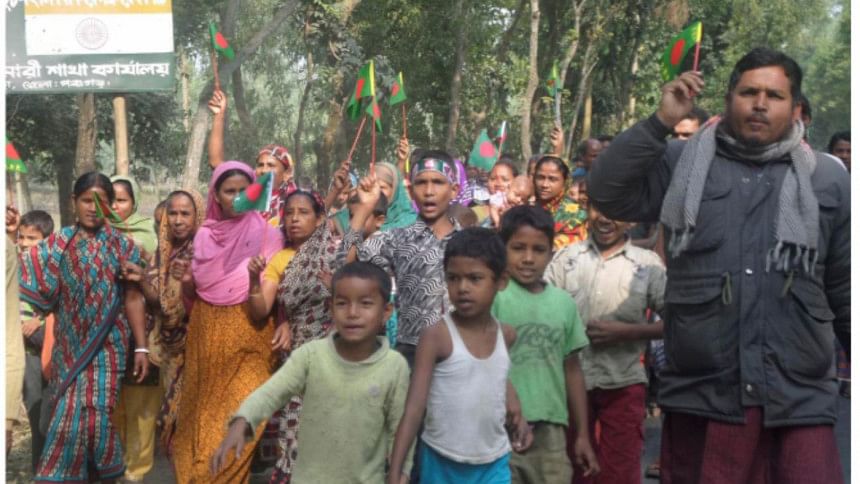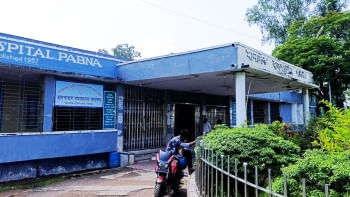“Waiting for the Esquimo”is over

BRENDAN Whyte, a social scientist, published from University of Melbourne in 2002 a paper titled "Waiting for the Esquimo". In this he has argued, as referred to by Brig. Anam Khan in his May 14, 2015 op-ed in The Daily Star, that an Esquimo (Eskimo) pilot i.e., an unlikely leader would be needed to resolve the enclaves' problems between Bangladesh and India. This has now happened and is a reality.
As Brig. Anam Khan has rightly pointed out, the Noon-Nehru agreement or at least the Bangladesh-India agreement of 1974 certainly could have been implemented without foot-dragging. Still, better late than never. I would like to supplement a little on the history of the origin of the enclaves as a kind of reminder as to how long this baggage has been carried. Also now that the inter-country problem appears to be over, we need to give some thought to immediate works for the integration of the enclave residents into the broader nation.
The Kingdom of Coochbihar came into existence from about 1540 AD under King Bisva Singh. At one time it spread over much of central and eastern Bangladesh just past present Chittagong to the south under the reign of Nar Narayan around 1560. About 1575, the Mughal army confronted the Coochbihar kings but the border remained fluid. In about 1661 Mirjumla conquered Coochbihar. Yet, the tussle continued between the two sides and ended in the early part of the eighteenth century when the Coochbihar king ceded certain parts of the kingdom to the Mughals. This to and fro between the two sides resulted in backwaters remaining in areas controlled by the two parties and later formalised through treaties in 1711-13. Within Coochbihar, certain small areas remained loyal to Mughal authority. The same happened with Coochbihar kings retaining control through lease in certain areas mainly in present day Rangpur Division, then under the Mughal authority. This resulted in the present enclaves; although over time some changes had taken place, but not much. Apparently these lands were owned by or leased to the King or on his behalf to Koch zamindars. At present these lands although in possession now of private households were initially actually khas lands.
In any case, the enclave formation led sometime to geographical aberration such as the only counter-counter-enclave in the world. The main Indian enclave of Balapar Khagrabari is/was 6415.06 acre which surrounds a Bangladesh counter enclave named Upanchowki Bhajini of 110.97 acres which then completely surrounds the counter-counter enclave of Indian Dahala Khagrabari of only 1.70 acres.
The enclaves, counter-enclaves and the only counter-counter enclave have no natural physical boundaries between them and many are in very close proximity to each other and are of all shapes and sizes. The border between any two, sometimes marked with pillars, may lie through a crop field, possibly a house or middle of a national highway, an irritant to the extreme to those who have to live and earn their livelihood there through means, fair or foul, and administrators who have to administer those areas. In any case such historical baggage now being shed, the time has come for integration of the enclaves and their erstwhile residents into the national mainstream. However, one needs to be cautious in the process.
The proper identification of these enclaves (including their ownership status, private or State i.e., originally held by the kingdom of Coochbihar) and their proper recording is necessary for avoidance of almost certain and lengthy land ownership suits at a later stage. The Jurisdiction List (JL) numbers are not in all cases unique, some time it is the same for different enclaves as they may be under different police stations. Second, over time even in comparatively recent period of the last hundred years or so, cadastral and other land surveys have recorded them in different ways as some mergers or exchanges had taken place between districts the boundaries of which also changed. So clear land recording of ownership, operation or encroachment with immediate digitisation for fast data retrieval and fair and proper land administration is now a must.
Such proper recording may help in several ways. First, as there are confusions regarding exact numbers and area under the enclaves and counter-enclaves, this needs to be decided once and for all. Secondly, when exchange of people, if it takes place, happens, unscrupulous people may try to take advantage of the apparent ensuing chaos unless the recordings are started right away and put in order. The governments and administrations in both India and Bangladesh should take measures so that ordinary people do not suffer due to these anomalies and be dispossessed of their properties. For a start, possibly no land transfers may be allowed to people from outside the enclaves for a few, say, five years. On the other hand, those lands which may be identified to have belonged to the Maharajah of Coochbihar or held on his behalf may perhaps be declared khas to be managed by the government.
Finally, if people from Bangladesh enclaves in India migrate to the Bangladesh mainland, they need to be rehabilitated for which the government must immediately draw a programme with adequate resources and office protocols. If some lands are vacated by those departing from enclaves within Bangladesh for India, probably those along with any khas land that may be available may be used for rehabilitation. This is thus going to be a critical exercise. Let us at least hope that with the LBA now entering any day into force, people who had been suffering for so long will have their cup of misery at least less full than before.
The writer is Professorial Fellow, BIDS.

 For all latest news, follow The Daily Star's Google News channel.
For all latest news, follow The Daily Star's Google News channel. 



Comments